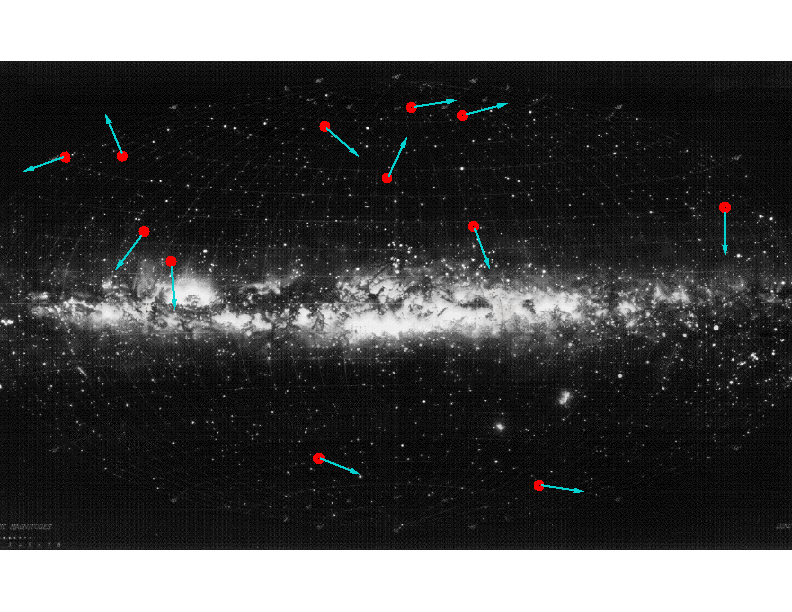
The debris streams' stars positions
and motions in the sky. These stars came aboard a satellite galaxy about
10 billion years ago!
(Amina Helmi et al., 1999, Nature, 402,
53)
According to the now standard paradigm for the origin and evolution of structure, galaxies were built up through gravitational amplification of primordial fluctuations, smaller scale analogues of those observed in the microwave background radiation. Like other large galaxies, our own Milky Way was assembled from many smaller precursors, whose stars should now make up part or all of its bulge and stellar halo. If much of the Milky Way's stellar spheroid formed by the merging of stellar precursors, then one might hope to find ``fossil" evidence for this origin in the present distribution of halo stars. Dramatic confirmation that this process continues came with the discovery of the disrupting dwarf galaxy in Sagittarius, but direct evidence for inhomogeneous assembly of the bulk of the Milky Way's old stellar population has so far been lacking. Here we use kinematic data from the HIPPARCOS satellite to demonstrate that about a tenth of the metal--poor stellar halo outside the Solar radius comes from a single coherent object which was disrupted during or soon after the Milky Way's formation. This object had a highly inclined orbit with an apogalaction of about 16~kpc, and probably resembled the Fornax and Sagittarius dwarf spheroidal galaxies.

The debris streams' stars positions
and motions in the sky. These stars came aboard a satellite galaxy about
10 billion years ago!
(Amina Helmi et al., 1999, Nature, 402,
53)